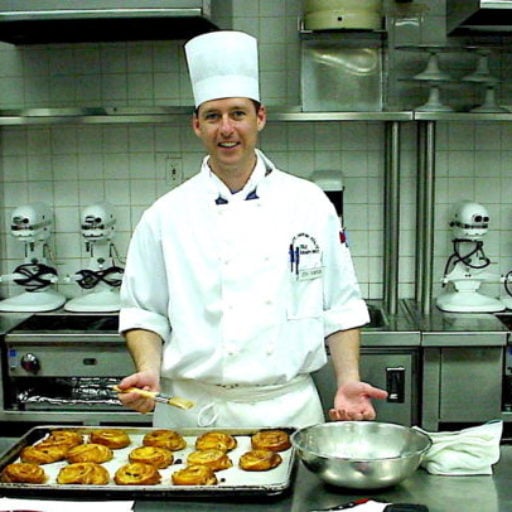There seem to be a million techniques and opinions on how to poach eggs and an equal number of ways to screw it up. Where I went to culinary school, The French Culinary Institute, Jacques Pepin is the Dean of Special Programs. He is always is my go-to authority on the culinary technique. So, when it comes to a foolproof poached egg recipe, of course, Chef Jacques method is the way I do it. It’s a perfect technique and is absolutely foolproof.
In my kitchen at home, I use an 11-inch nonstick frying pan (rounded sides). It is deep enough to hold about 2 to 3 inches of water and large enough to comfortably poach 4 eggs at a time. Round sides of the pan make maneuvering the eggs around easier and less chance of breaking the yokes. I have a bowl of ice water ready and a slotted spoon. If you are concerned about your fingers accidentally touching the boiling water, crack the eggs into a small bowl first, then slip the eggs into the water. If you choose this method, then you need some small prep bowls as well. I don’t like the extra dirty dishes, so I crack the eggs directly into the water and yes, your fingers need to be very close to the water. If you drop the egg in from too high up, you’ll just make a mess and wind up with egg drop soup rather than poached eggs.
How to Poach Eggs
- Bring the water to a boil
- Add ½ cup of distilled white vinegar to boiling water. This lowers the temperature to below boiling which is perfect.
- Crack the eggs into the simmering water. Each egg needs to have its own space so they don’t stick together
- If the whites start to spread, gently spoon them towards the yoke to keep a tight shape
- Don’t try to move them too soon. However, you want to make sure they’re not stuck to the bottom of the pan
- Simmer for 2 minutes, reduce heat to a low, continue to cook for 2 more minutes.
- With a slotted spoon, remove eggs and place them into ice water to stop the cooking and rinse some of the vinegar from the eggs.
These can be made well in advance of when you serve them (the night before is fine). Simply store them in the refrigerator in a bowl of cold water. When you are ready to serve, bring a pot of plain water to a simmer, place an egg in the water for one minute. This is not enough to start cooking the egg but will warm it through. Gently remove the egg with a slotted spoon and dry gently before plating it up.
And that’s it, the first couple of times you do this it may seem a little awkward and freak you out a little. But it’s really not that difficult and the presentation is worth the little extra effort.
You should check out Chef Jacques Pepin’s video on YouTube, he’s a master and the best instructor you could ever hope to learn from.
